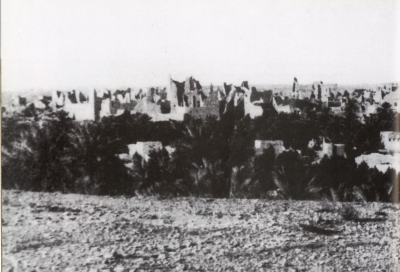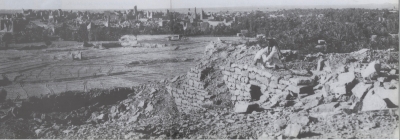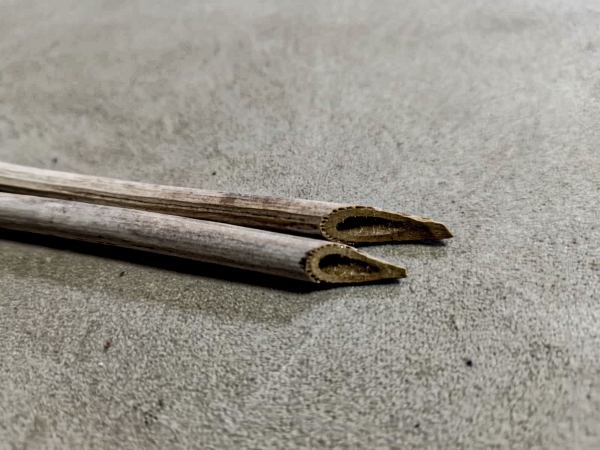
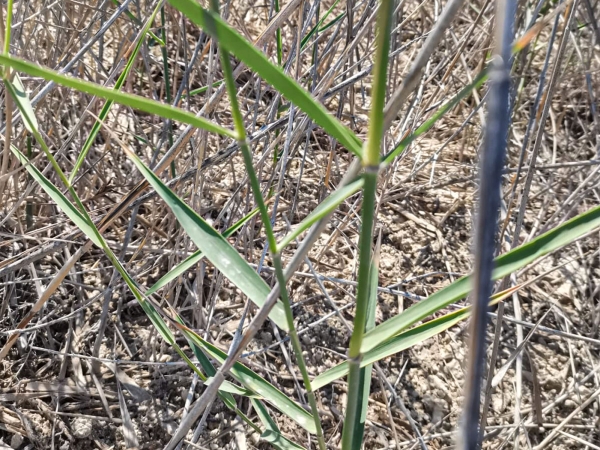
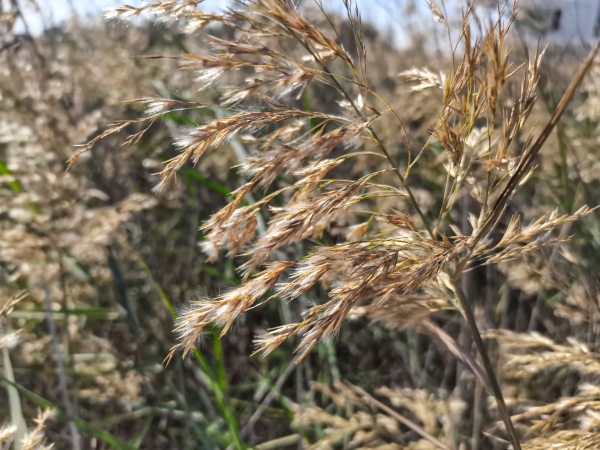
Pen-Making in Najd: The people of Najd Region once held an interest in pens, particularly among the educated, whether during al-Katatib (primary education) stage or the subsequent stages. Pens served as tools for writing, both in education and in the creation of Najdi manuscripts, a craft that gained prominence between the fifteenth and nineteenth centuries. One notable example of their dedication was the practice of some scholars lending their pens to others for communal use. These pens were crafted using tools readily available in the Najdi environment for their production.
Pen-making tools in Najd
The people of Najd used their own knowledge and the resources available in their surroundings to make pens. Typically, pens were made from Cladium mariscus (reed), a local species commonly found around wells and waterways in Najd. In addition, branches from various local trees were also used to make pens, including tamarisk, safflower, pomegranate, arta (Calligonum comosum), Acacia, and Acacia nilotica, as well as any other plant waste with sturdy branches, all of which were just as effective as reed.
Pen-makers in Najd
Pens in Najd were made by various individuals, with no specific group exclusively responsible for their production. Among the pen makers were students, particularly the elderly, as well as the Mutawwa' (teachers in the early stages of traditional education), and carpenters who also made writing boards. Some farms, like 'al-Halifa' farm, became known for pen-making due to the abundance of the Cladium mariscus plant, which led its owner to take on the task of making, improving, and preparing pens for sale to students in certain countries.
Types of pens in Najd
The pens in Najd varied depending on the material used. Pens made from solid plant branches were common, primarily used for writing on wooden boards in early education, known as 'al-Katatib.' These pens were simple to prepare by trimming the branch to a pointed tip, a process repeated as needed using a sharp knife. When re-sharpening, it was important to ensure that the pen's head was dry, as a damp tip could complicate the cutting process.
For advanced education that required writing on paper, pens known as al-Aklam al-Mujawafa (hollow pens) were used. Made from Cladium mariscus, bamboo, or any stick with an easily removable core, these pens were also referred to as 'al-Bows.' The preparation method varied, but typically involved cutting the tip at an angle to form a nib-like shape, similar to modern pens. A small slit was then made by the maker in the nib to help the pen hold more ink. Additionally, the people of Najd used feathers from large birds, such as ostriches, particularly those from the tips of their wings. However, these feather pens were less commonly used than the other types.
Prominent types of pens include:
- Al-Kalam al-Moharraf: It is a pen with an asymmetrical cut, where the tip on the right side is thinner, yet both tips maintain equal thickness overall. This type is considered the best choice among professionals.
- Al-Kalam al-Kaem: It is a pen with a flat point.
- Al-Kalam al-Mosawab: It is a pen with a pointed tip.
- Al-Kalam al-Mostawi: It is a pen with a symmetrical cut, meaning all sides are of equal length, and is regarded as the lowest quality by professionals.
Related quizzes
Related articles

